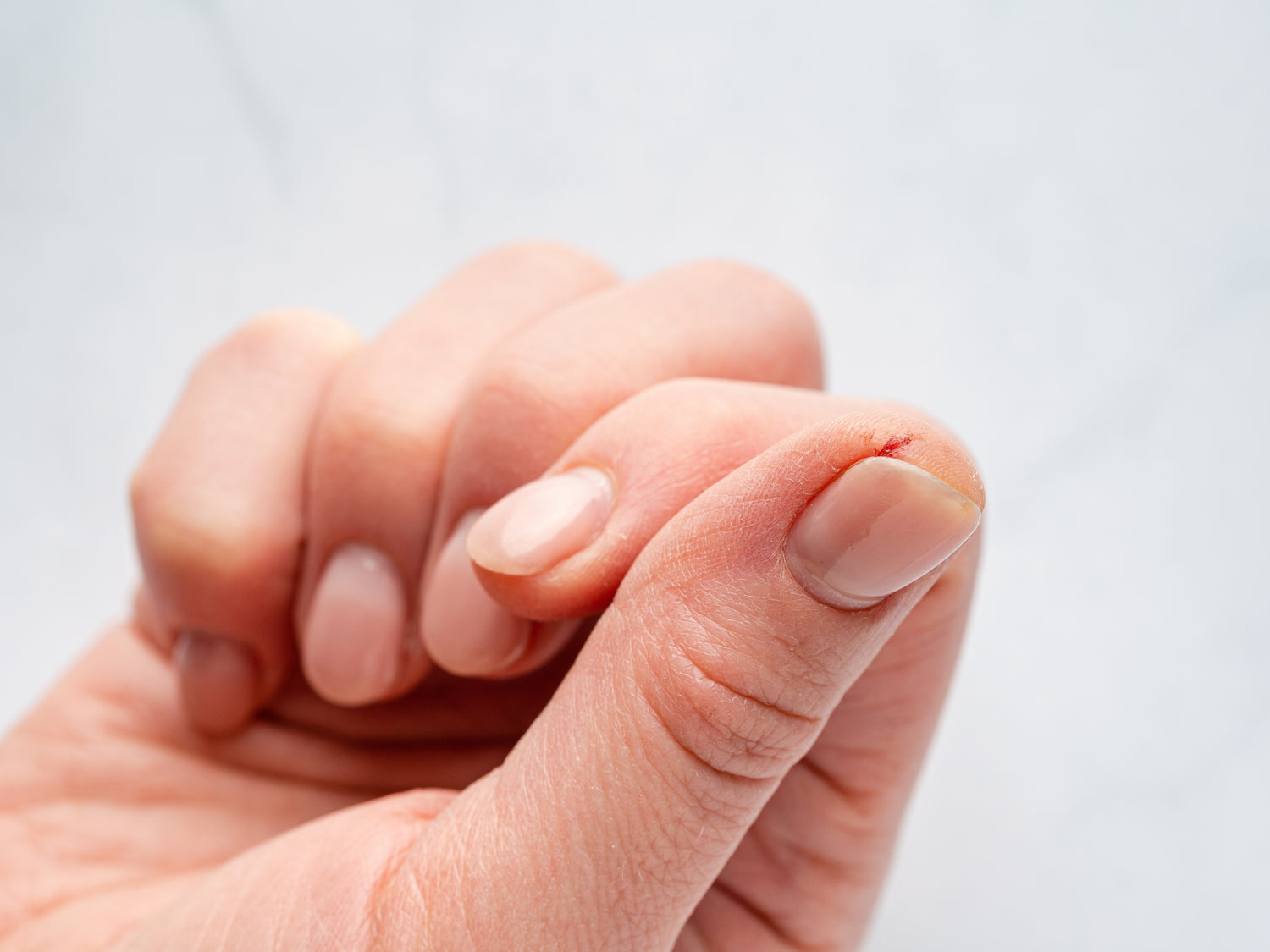Experiencing pain even in the little parts of our body can turn your days into uncomfortable experiences.
Although they may look less dangerous and alarming, having dry and cracked fingertips can take a toll on your overall comfort. The persistent discomfort that they bring can make everyday activities like typing, dressing up, and doing house chores difficult and painful.
WHAT IS XEROSIS?
According to VerywellHealth, cracked fingertips are a sign of very dry skin, known as xerosis. The dry skin can be caused by one's daily activities or naturally set off by environmental triggers.
If you frequently wash dishes in hot water or use harsh drying soaps, you may likely acquire the said skin condition. Many people also experience dry skin from certain products and environmental triggers, such as:
- Harsh chemicals in hand soaps and cleaning products
- Dry climates
- Aging
- Changing seasons, particularly the winter
- Exposure to the sun
- Long hot showers
On the other hand, the symptoms of xerosis may include:
- Very dry skin, which may appear red, flaky, or inflamed
- Cracks in the skin
- Discoloration in the fingernails
- Brittle or broken fingernails
WHAT CAN BE ASSOCIATED WITH DRY SKIN?
The health website mentioned that while dry skin may be common, cracked and painful fingers may indicate an underlying health problem. In their report, they said that the symptoms mentioned above "can also be indicative of other skin conditions or underlying medical conditions" that need proper medical attention.
1. DIABETES
According to ClevelandClinic, people who have diabetes have higher chances of acquiring dry and itchy skin compared to those who don't have the disease. The blood flow changes that they experience in their extremities, particularly the hands and feet, cause the skin to become dry and cracked. Moreover, having high blood sugar and certain skin conditions also affects dry, itchy skin.
2. INFECTION
VerywellHealth reported that bacteria and other germs can easily enter the body once your skin becomes dry and cracked. “Fungal skin infections, like athlete's feet, are especially common in people who have dry, cracked fingertips. If you notice your fingernails becoming brittle, yellow, or thickened, talk with your healthcare provider,” the article read.
3. SKIN CONDITIONS
Having painfully dry and cracked skin may be associated with skin conditions like eczema and psoriasis. Since these two skin conditions can be triggered by allergens, changing weather, and other environmental factors, they are believed to be “associated with an overactive autoimmune system.”
-
Eczema: Also known as atopic dermatitis, eczema is a group of inflammatory skin conditions that cause the skin on any part of the body to become irritatingly itchy, red, and dry. If you want to know more about eczema, read our previous blog here.
- Psoriasis: A long-lasting, inflammatory skin condition, psoriasis creates unneeded skin cells as a result of an overactive immune system. The condition, however, is often misunderstood as it generates scaly patches on the skin that can bleed, itch, and emit pus-filled blisters when aggravated. If you want to know more about psoriasis, read our previous blog here.
HOW TO TREAT DRY, CRACKED FINGERTIPS?
Healing dry and cracked fingertips depends on what's causing them. Although there's no hasty remedy for dry and cracked fingertips, practicing these tips should make a difference.
- APPLY MOISTURIZERS

As temperatures drop, humidity levels do too. When that happens, our skin loses moisture because of the dry air around us, so it's crucial to use moisturizers to help retain hydration in the skin and prevent moisture loss. To keep your hands well moisturized even at home, VerywellHealth recommends:
- After washing your hands, leave them slightly damp or allow them to air-dry.
- While your hands are damp, apply hand cream, focusing on the fingertips and nails.
- If you use hand sanitizer, apply moisturizer directly after, since the alcohol in hand sanitizer can make dry skin worse.
- CHOOSE THE RIGHT MOISTURIZER

Make it a habit to apply dermatologists-backed gentle moisturizers after washing your hands to retain moisture on the skin. To help choose the right moisturizer, you follow these recommendations from VerywellHealth:
- Occlusives: Prevent moisture loss from the skin's surface. These contain ingredients like mineral oil or petrolatum.
- Humectants: Hydrate the skin by pulling moisture from the air and attracting and binding water on the skin. These contain ingredients such as hyaluronic acid, lactic acid, and glycerin.
- Emollients: Create protective layers on the skin. Emollients can be found in palm oil, coconut oil, and wool fat.
- Moisturizers that are fragrance-free and dye-free: These can help you avoid irritating your skin more.
- WEAR COTTON GLOVES

When moisturizing, you can wear cotton gloves to retain moisture. Doing so while your skin is still damp helps lock in moisture even in sleep.
If you're looking for cotton gloves that improve dry hands by allowing the skin to better absorb moisturizing creams and ointments, try our allergy-free organic cotton hand gloves made with 100% organic cotton.
These organic cotton hand gloves ultimately work best against dry hands and hand eczema by locking in moisture and allowing the skin to better absorb them. They also prevent scratching, chafing, and rashes, perfect for keeping your hands safe from irritating materials when working or doing house chores.
To know more about dry, painful, and cracked fingertips, visit this article. You may also want to read our previous blog Irritant Vs. Allergic Contact Dermatitis: What's The Difference?
DISCLAIMER: The information presented on Cottonique is not, and will never be, intended to be a substitute for professional medical advice, diagnosis, or treatment. All content materials found on this site, from text, treatments, outcomes, charts, graphics, photographs, and study findings, are created and published for general informational purposes only. It should not, in any way, be construed as a standard of care to be followed by a user of the website.
Thus, readers are encouraged to verify any information obtained from this website with other accurate references and review all information regarding any medical condition or treatment with their physician. As Cottonique strives to help those with allergies live with better days, the hypoallergenic apparel brand encourages everyone to always seek the advice of their physician or other qualified health providers with any questions they may have regarding a medical condition.






Leave a comment
This site is protected by reCAPTCHA and the Google Privacy Policy and Terms of Service apply.